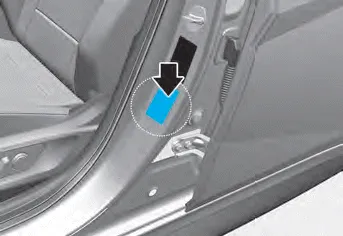Hyundai Elantra (CN7): Tires and Wheels / Tire Care
For proper maintenance, safety, and maximum fuel economy, you must always maintain recommended tire inflation pressures and stay within the load limits and weight distribution recommended for your vehicle.

All specifications (sizes and pressures) can be found on a label attached to the driverŌĆÖs side center pillar.
WARNING Tire failure may cause loss of vehicle control resulting in an accident. To reduce risk of SERIOUS INJURY or DEATH, take the following precautions: Inspect your tires monthly for proper inflation as well as wear and damage.
All tire pressures (including the spare) should be checked when the tires are cold. ŌĆ£Cold tiresŌĆØ means the vehicle has not been driven for at least three hours or has been driven for less than one mile (1.
Categories
- Manuals Home
- Hyundai Elantra Owners Manual
- Hyundai Elantra Service Manual
- Components and components location
- Instrument Cluster
- Towing
- New on site
- Most important about car
